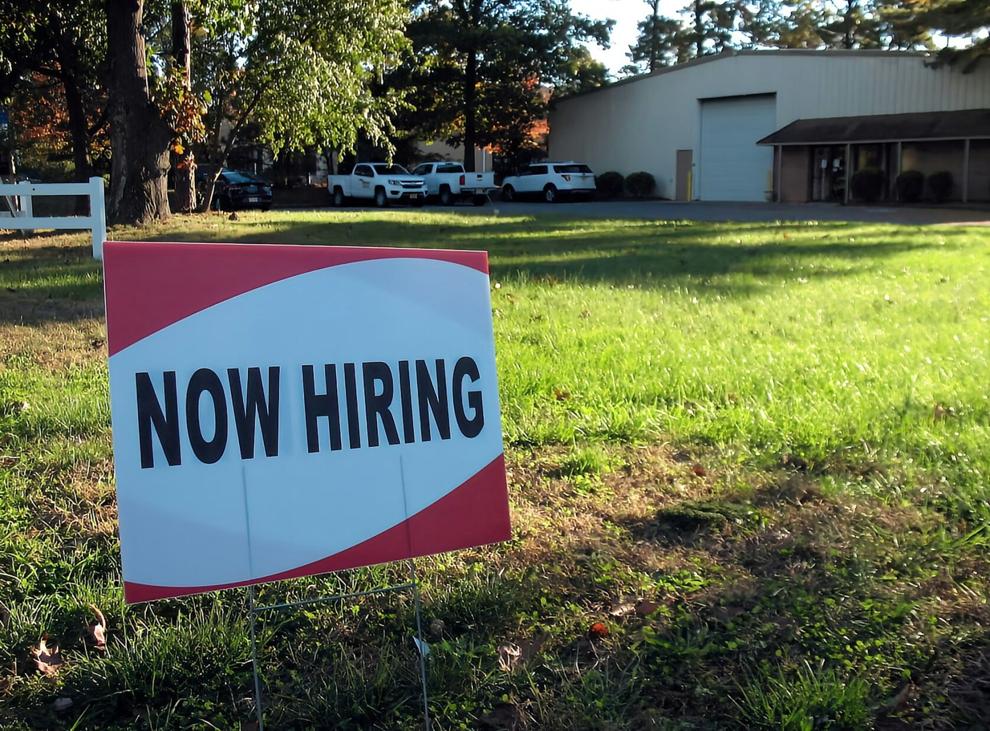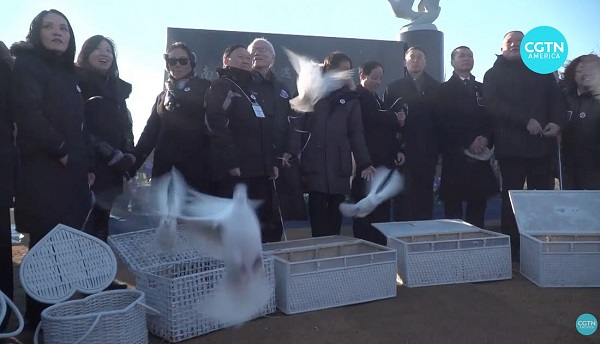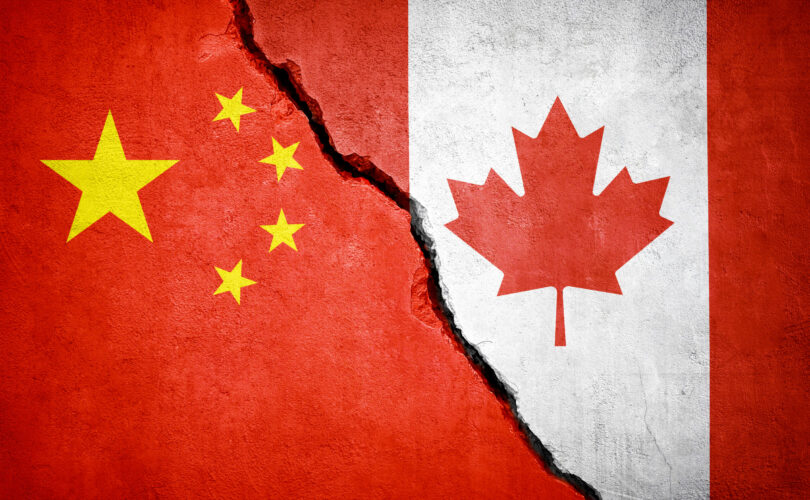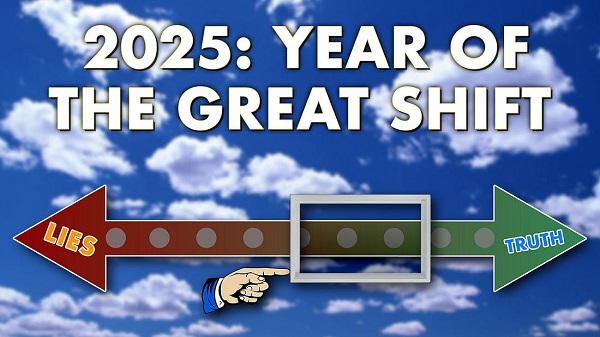Economy
Former socialist economist explains why central planning never works

From the Fraser Institute
Central planning from the inside—an interview with a Soviet-era economist
In our descriptions of socialism in Poland and Estonia, we often quoted firsthand accounts of Poles and Estonians who lived through the period. These were workers, consumers, victims of oppression and resistance fighters. One voice that we didn’t capture was that of the planner—the government official charged with making the economy work, despite socialism’s enormous handicaps.
To better understand that perspective, I recently interviewed Gia Jandieri, an economist who worked for the State Supply Committee in Georgia from 1984 to 1989.
In 1989 Gia cofounded the very first non-governmental organization in Soviet Georgia (the Association of Young Economists) to push for market economic education. And in 2001 he established a think-tank, the New Economic School, to promote economic freedom. The New Economic School has been a full member of the Economic Freedom Network since 2004.
Here’s our discussion (lightly edited for readability):
Matthew Mitchell (MM):
How did you become an economist and a Soviet planner?
Gia Jandieri (GM):
It was accidental. In 1984 my mother worked at the Gossnab (the State Supply Committee for the Central Planning Authority) and she offered to introduce me to her boss. At that time I was only 23 years old and had graduated from the Georgian Polytechnical Institute. My knowledge of economics was mostly from life and family experience (my parents worked at a metallurgical plant).
But as a student in 1979 I had had what I thought were a few strange discussions with a teacher of political economy. Like most teachers, he was no true believer in socialism (it was hard for anyone to believe at that time). But he was required to teach the propaganda. What surprised me was that he was willing to publicly agree with me about my suspicions that the system was failing and might even collapse. This was rare, and he was taking a risk. But it also inspired me. It is also important to note that he wanted to hide his hesitation about Marxism and the Soviet system and he also wanted me to stop my questions, and/or stop attending his lectures (which was of course not allowed). I recall he told me: “either I report you or someone reports both of us for having prohibited discussions.”
When I finished my university study of engineering, I was already sure I wanted to be an economist. So, when the opportunity arose in 1984 to work at the State Supply Committee, I seized it.
MM:
Tell us a little bit about the job of a planner. What were your responsibilities? And how did you go about doing them?
GJ:
Our department inside of Gossnab was responsible for monitoring the execution of agreements for production of goods and government orders. My task was to verify that the plans had been executed correctly, to find failures and problems, and to report to the higher authorities.
This included reading lots of reports and visiting the factories and their warehouses for auditing.
The Soviet economy had been in a troublesome condition since the 1970s. We (at the Gossnab) had plenty of information about failures, but it wasn’t useful. We knew that the quality of produced goods was very low, that any household good that was of usable quality was in deficit, and that the shortages encouraged people to buy on the black market through bribes.
In reality, a bribe was a substitute for a market-determined price; people were interested in paying more than the official price for the goods they valued, and the bribe was a way for them to indicate that they valued it more than others.
The process of planning was long. The government had to study demand, find resources and production capacities, create long-run production and supply plans, compare these to political priorities, and get approval for general plans at the Communist Party meetings. Then the general plans needed to be converted to practical production and supply plans, with figures about resources, finances, material and labour, particular producers, particular suppliers, transportation capacities, etc. After this, we began the process of connecting factories and suppliers to one another, organizing transportation, arranging warehousing, and lining up retail shops.
The final stage of the planning process was to send the participating parties their own particular plans and supply contracts. These were obligatory government orders. Those who refused to follow them or failed to fulfill them properly were punished. The production factories had no right or resources to produce any other goods or services than those described in the supply contracts and production plans they received from the authorities. Funny enough, though, government officials could demand that they produce more goods than what was indicated in the plans.
MM:
What made your job difficult? Let’s assume that a socialist planner is 100 per cent committed to the cause; all he or she wants to do is serve the state and the people. What makes it difficult to do that?
GJ:
There were several difficulties. We had to find appropriate consumer data and compare it to the data of suppliers (of production goods mostly). I was working with several (5-15) factories per year. I needed to have current and immediate information, but the state companies were always trying to hide or falsify their reports. In some cases, waste and theft could be so significant that production had to be halted.
The planners invested vast sums of money and time in data collection and each had special units of data processing.
This was a technical exercise and had nothing to do with efficiency or usefulness. The collected data was outdated by the time it was printed. The planning, approval, and execution processes could take many years to complete, and by the time plans were ready, demand had usually changed, creating deficits of what was demanded and surpluses of what was not demanded. The planners, no matter how dedicated or intelligent they might be, simply couldn’t meet the demands of the customers.
Central planning was not an easy exercise. The central planners needed to understand what was needed—both production supplies and consumer goods. But, of course, we had no way of knowing what people truly wanted because there was no market. Consumers weren’t free to choose from different suppliers and new suppliers weren’t free to enter the market to offer new or slightly different goods.
One of the more helpful ways to find out what people wanted was to look at what consumers in the West wanted since they actually had economic freedom and their demands were quickly satisfied. The government also did a lot of industrial spying to steal Western production ways and technologies.
MM:
Were most of the planners you encountered 100 per cent committed to the cause? Were they incentivized to serve the cause?
GJ:
Some of the staffers were dedicated to their work. Others were mostly thinking about how they could obtain bribes from the production factories as a reward for closing their eyes to mismanagement and failure. The planners were also involved in more significant corruption to allow the production factories to have extra materials and financial resources so they could produce for the black market or so they could simply steal.
Then the revenue from these bribes would be divided among all personnel from different agencies (like the Price Committee, Auditing (“Public Control”), and several other agencies charged with inspections). So, in fact, the system generated corruption as a substitute for official incentives. If anything was still operating, this was mostly due to these corrupt incentives and not in spite of them.
The planning system was quite complex and involved many governmental offices though the main decisions were made by the Communist Party. Planning authorities would report to the Party leadership what they thought would be possible to produce and Party leaders would inevitably demand higher quantities.
Gosplan was bureaucratic to its core, both in principle and character. Nobody was allowed to innovate other than planned/artificial innovation. Everyone had to work only by decrees and orders coming from the political leadership. The political orders and bribes were the only engines that were moving anything. Market incentives didn’t exist. Bonuses (premia) were awarded according to bureaucratic rules, and, paradoxically, these destroyed the motivation of the genuinely hard workers.
MM:
Moving beyond economics a bit, how did the socialist system affect other aspects of life? Culture, families, relationships, civil institutions?
GJ:
One of the examples is Western pop-music. Soviet propaganda tried to hide Western culture. Music schools mostly taught Russian classical music and some folk music of various Soviet ethnic nationalities, but it was mostly Russian.
Jazz and hard rock were not prohibited but very much limited. That of course encouraged smuggling and illegal dissemination, as in every sector. Soviet music factories were buying some rights to the music (for instance the Beatles, Louis Armstrong and Ella Fitzgerald). But these recordings were only available in limited quantities and were of bad quality in order to limit their influence.
Small illegal outfits would make unofficial and illegal copies of any popular western music (not classical).
Cultural institutions like theatre or cinema were harshly censored and mostly served the propaganda machine. The people involved in these sectors did what all producers of goods did. They needed to lobby their benefactors in the bureaucracy, bribing and currying favour with them in different ways. It was said that only one out of four films produced would be shown in the cinemas. The other three films were only produced so studios could steal the resources and obtain higher reimbursements.
Before Soviet rule, Georgia was a property rights and ethics-based society. We have ancient proverbs that testify to this. The Soviets killed the ethical leaders, the property-owning elite, and confiscated their property. The stolen property was supposed to be held in common. In fact, the bureaucracy took it.
State ownership of property opened the way to waste and theft of construction and production materials, office inventory, fertilizer, harvested agricultural products, etc.
In Georgia, one bright spot was underground education. Georgians succeeded in growing a network of informal tutors who effectively operated despite very harsh efforts by the authorities to quash them. These skillful teachers prepared the young people for university exams. This was so widespread that some successful young people (including my wife and friends, for instance) started offering private (completely illegal) teaching services when they were university students.
MM:
To this day, socialism remains alluring to many in the West, especially young people. What do you have to say to the 46 per cent of Canadians aged 18-34 who support socialism?
GJ:
Very simply, it is a mistake to think socialism fails because of the wrong managers. This mistake allows people to think that it’ll work the next time it is tried, if we just have better people. In fact the opposite is true—socialism invites the wrong managers. It doesn’t reward a great manager who tries to improve the system but a person who can adapt to and accept the corruption, waste and theft. Socialism also encourages corruption. When more resources are in the control of politicians and the bureaucracy, there is more favouritism, privilege, and discrimination. Jobs and business opportunities are based on privilege rather than market competition. This means naïve people will always be cheated by brazen liars and manipulators.
Poor people are told that the state is under their control but in fact the bureaucracy and political hierarchy control everything.
In socialism, nature and natural resources are abused and wasted. The Tragedy of the Commons runs rampant without private property, voluntary cooperation, and ethics. The government tries to manage everything centrally and totally fails because it lacks dynamic information, competitive discipline, and proper incentives.
Business
Socialism vs. Capitalism

People criticize capitalism. A recent Axios-Generation poll says, “College students prefer socialism to capitalism.”
Why?
Because they believe absurd myths. Like the claim that the Soviet Union “wasn’t real socialism.”
Socialism guru Noam Chomsky tells students that. He says the Soviet Union “was about as remote from socialism as you could imagine.”
Give me a break.
The Soviets made private business illegal.
If that’s not socialism, I’m not sure what is.
“Socialism means abolishing private property and … replacing it with some form of collective ownership,” explains economist Ben Powell. “The Soviet Union had an abundance of that.”
Socialism always fails. Look at Venezuela, the richest country in Latin America about 40 years ago. Now people there face food shortages, poverty, misery and election outcomes the regime ignores.
But Al Jazeera claims Venezuela’s failure has “little to do with socialism, and a lot to do with poor governance … economic policies have failed to adjust to reality.”
“That’s the nature of socialism!” exclaims Powell. “Economic policies fail to adjust to reality. Economic reality evolves every day. Millions of decentralized entrepreneurs and consumers make fine tuning adjustments.”
Political leaders can’t keep up with that.
Still, pundits and politicians tell people, socialism does work — in Scandinavia.
“Mad Money’s Jim Cramer calls Norway “as socialist as they come!”
This too is nonsense.
“Sweden isn’t socialist,” says Powell. “Volvo is a private company. Restaurants, hotels, they’re privately owned.”
Norway, Denmark and Sweden are all free market economies.
Denmark’s former prime minister was so annoyed with economically ignorant Americans like Bernie Sanders calling Scandanavia “socialist,” he came to America to tell Harvard students that his country “is far from a socialist planned economy. Denmark is a market economy.”
Powell says young people “hear the preaching of socialism, about equality, but they don’t look on what it actually delivers: poverty, starvation, early death.”
For thousands of years, the world had almost no wealth creation. Then, some countries tried capitalism. That changed everything.
“In the last 20 years, we’ve seen more humans escape extreme poverty than any other time in human history, and that’s because of markets,” says Powell.
Capitalism makes poor people richer.
Former Rep. Jamaal Bowman (D-N.Y.) calls capitalism “slavery by another name.”
Rep. Alexandria Ocasio-Cortez (D-N.Y.) claims, “No one ever makes a billion dollars. You take a billion dollars.”
That’s another myth.
People think there’s a fixed amount of money. So when someone gets rich, others lose.
But it’s not true. In a free market, the only way entrepreneurs can get rich is by creating new wealth.
Yes, Steve Jobs pocketed billions, but by creating Apple, he gave the rest of us even more. He invented technology that makes all of us better off.
“I hope that we get 100 new super billionaires,” says economist Dan Mitchell, “because that means 100 new people figured out ways to make the rest of our lives better off.”
Former Labor Secretary Robert Reich advocates the opposite: “Let’s abolish billionaires,” he says.
He misses the most important fact about capitalism: it’s voluntary.
“I’m not giving Jeff Bezos any money unless he’s selling me something that I value more than that money,” says Mitchell.
It’s why under capitalism, the poor and middle class get richer, too.
“The economic pie grows,” says Mitchell. “We are much richer than our grandparents.”
When the media say the “middle class is in decline,” they’re technically right, but they don’t understand why it’s shrinking.
“It’s shrinking because more and more people are moving into upper income quintiles,” says Mitchell. “The rich get richer in a capitalist society. But guess what? The rest of us get richer as well.”
I cover more myths about socialism and capitalism in my new video.
Business
Residents in economically free states reap the rewards

From the Fraser Institute
A report published by the Fraser Institute reaffirms just how much more economically free some states are compared with others. These are places where citizens are allowed to make more of their economic choices. Their taxes are lighter, and their regulatory burdens are easier. The benefits for workers, consumers and businesses have been clear for a long time.
There’s another group of states to watch: “movers” that have become much freer in recent decades. These are states that may not be the freest, but they have been cutting taxes and red tape enough to make a big difference.
How do they fare?
I recently explored this question using 22 years of data from the same Economic Freedom of North America index. The index uses 10 variables encompassing government spending, taxation and labour regulation to assess the degree of economic freedom in each of the 50 states.
Some states, such as New Hampshire, have long topped the list. It’s been in the top five for three decades. With little room to grow, the Granite State’s level of economic freedom hasn’t budged much lately. Others, such as Alaska, have significantly improved economic freedom over the last two decades. Because it started so low, it remains relatively unfree at 43rd out of 50.
Three states—North Carolina, North Dakota and Idaho—have managed to markedly increase and rank highly on economic freedom.
In 2000, North Carolina was the 19th most economically free state in the union. Though its labour market was relatively unhindered by the state’s government, its top marginal income tax rate was America’s ninth-highest, and it spent more money than most states.
From 2013 to 2022, North Carolina reduced its top marginal income tax rate from 7.75 per cent to 4.99 per cent, reduced government employment and allowed the minimum wage to fall relative to per-capita income. By 2022, it had the second-freest labour market in the country and was ninth in overall economic freedom.
North Dakota took a similar path, reducing its 5.54 per cent top income tax rate to 2.9 per cent, scaling back government employment, and lowering its minimum wage to better reflect local incomes. It went from the 27th most economically free state in the union in 2000 to the 10th freest by 2022.
Idaho saw the most significant improvement. The Gem State has steadily improved spending, taxing and labour market freedom, allowing it to rise from the 28th most economically free state in 2000 to the eighth freest in 2022.
We can contrast these three states with a group that has achieved equal and opposite distinction: California, Delaware, New Jersey and Maryland have managed to decrease economic freedom and end up among the least free overall.
What was the result?
The economies of the three liberating states have enjoyed almost twice as much economic growth. Controlling for inflation, North Carolina, North Dakota and Idaho grew an average of 41 per cent since 2010. The four repressors grew by just 24 per cent.
Among liberators, statewide personal income grew 47 per cent from 2010 to 2022. Among repressors, it grew just 26 per cent.
In fact, when it comes to income growth per person, increases in economic freedom seem to matter even more than a state’s overall, long-term level of freedom. Meanwhile, when it comes to population growth, placing highly over longer periods of time matters more.
The liberators are not unique. There’s now a large body of international evidence documenting the freedom-prosperity connection. At the state level, high and growing levels of economic freedom go hand-in-hand with higher levels of income, entrepreneurship, in-migration and income mobility. In economically free states, incomes tend to grow faster at the top and bottom of the income ladder.
These states suffer less poverty, homelessness and food insecurity and may even have marginally happier, more philanthropic and more tolerant populations.
In short, liberation works. Repression doesn’t.
-

 armed forces2 days ago
armed forces2 days agoOttawa’s Newly Released Defence Plan Crosses a Dangerous Line
-

 espionage2 days ago
espionage2 days agoCarney Floor Crossing Raises Counterintelligence Questions aimed at China, Former Senior Mountie Argues
-

 Health2 days ago
Health2 days agoAll 12 Vaccinated vs. Unvaccinated Studies Found the Same Thing: Unvaccinated Children Are Far Healthier
-

 International9 hours ago
International9 hours agoOttawa is still dodging the China interference threat
-

 Energy2 days ago
Energy2 days ago75 per cent of Canadians support the construction of new pipelines to the East Coast and British Columbia
-

 Business7 hours ago
Business7 hours agoThere’s No Bias at CBC News, You Say? Well, OK…
-

 Automotive6 hours ago
Automotive6 hours agoCanada’s EV gamble is starting to backfire
-

 International8 hours ago
International8 hours ago2025: The Year The Narrative Changed






